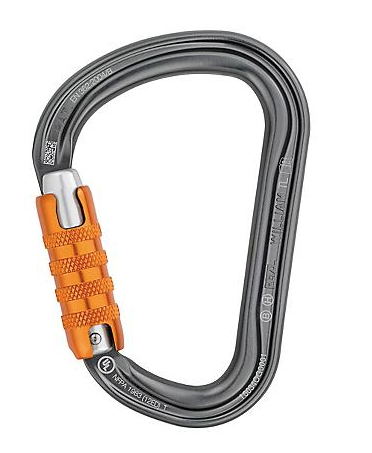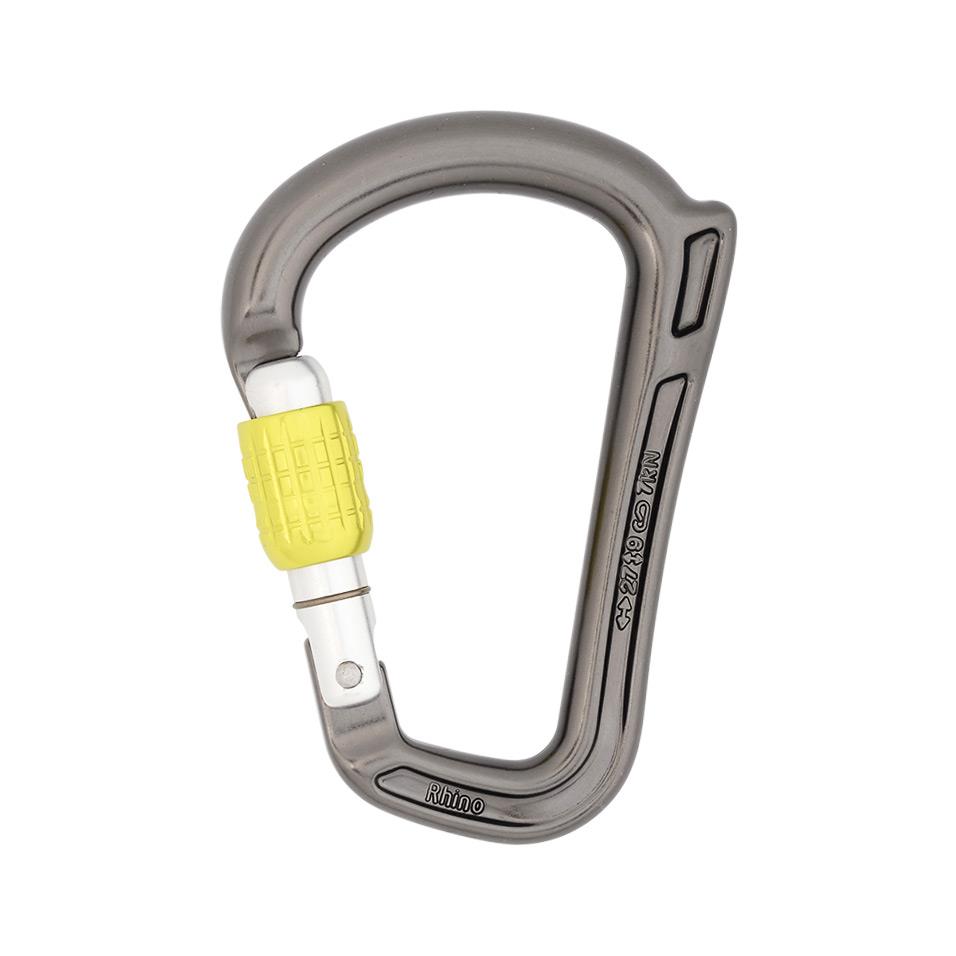CARABINERS
Carabiners come in a range of weights and sizes and some designed for their own specific purpose. Carabiners are used for all sorts of reasons from clipping to anchors to securing your belay plate to your harness.
Parts Of A Carabiner
- Gate: The part of the carabiner that moves and opens.
- Spine: The spine is the lenght of carabiner opposite the gate.
- Rope Basket: The wider top section of the carabiner where the rope runs through.
Gates
- Screw gates: The gate is screwed to secure.
- Snapgate: While snapgates are carabiners, they are most often just referred to as snapgates. The gate is freely opened and is not secured shut. Snap gates are used on quickdraws, for securing climbing protection to harness and at anchors.
- Other: Other carabiners used are double and triple lock.



Most Common Types
- Standard Carabiner: A standard carabiner is roughly 10cm in length and pear shaped. Used for gear, anchors.
- HMS: Large pear shaped carabiner. Gets its name from the abbreviated Germen word ” Halbmastwurfsicherung meaning Italian hitch or munter hitch if you want to get all american. Easy to belay off with an Italian hitch. Great for using with your belay plate as there is a lot of room to tie off.
- Belay Specific: Lots of carabiners are designed with belaying in mind. Some include the DMM Rhino and the DMM Belay Master. These carabiners are designed to prevent cross loading, see below.

DMM Aero

Strenght Rating
All climbing equipment has its strength rated. This rating is marked on the piece of gear. Its strength is rated in Kilonewtons (kN). 1kN = 100Kg, so in theory, a piece of gear with a strength rating of 9kN should hold 900Kg weight.
The average carabiner has a strenght rating of 25kN when loaded in the correct direction (see below).
Cross-loading
Cross-loading is when a carabiner moves and it becomes loaded on its gate and spine. This suddenly reduces the strength of a carabiner by over half. This is extremely common when belaying, so watch out.


